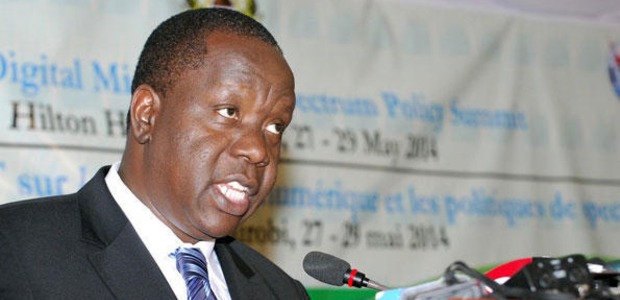advertisement
Kenya’s Broadband Strategy to be restructured to double broadband footprint by 2017
This was said by the Cabinet Secretary Ministry of ICT, Dr. Fred Matiang’i at the BroaderWay Forum 2015, held in…

This was said by the Cabinet Secretary Ministry of ICT, Dr. Fred Matiang’i at the BroaderWay Forum 2015, held in collaboration with Huawei Technologies and The Ministry of ICT.
“ICT is viewed as a key economic enabler towards achieving Vision 2030. Expansion of Broadband in Kenya is set to determine the next cause of our economy. We as a country are moving everything on the e-platform therefore need for more broadband and need to revise our National
Broadband Strategy and come up with framework that will help see how we can have more people online to access critical information by 2017,” said Dr. Fred Matiang’i.
advertisement
Dr. Matiang’i also called on the County Governments to push for the ICT policies that will enable broadband penetration in the counties, citing that to date there are only eight counties that have ICT policies in place to drive ICT into the counties.
“We have documents that are our pillars in the Ministry of ICT. The documents will enable us become an economic enabler by 2030, this include, the Cyber Security Strategy, National BroadBand strategy and the ICT Masterplan. But with all this in place we still need to work closely with the county governments to drive broadband penetration into the counties,”
He also called on the County Governments to partner with private sectors to spur innovation across counties. ” As much as we want to double up the broadband footprint in Kenya by 2017, we cannot do this alone, we need to partner closely with the Private Sector as well and the counties.
advertisement
The Government is also looking into working closely with Kenya Power and Lighting Company (KPLC), Kenya Pipeline, Kenya Railways and KeTRACO, to help in full intergration of broadband infrustructure through the infrustructure by this organisations.
Speaking at the same event, Victor Kyalo, CEO ICT Authority said,” With the four under sea cables in the Kenyan Coast, Kenya has the largest bandwidth in the continent. The challenge is how can we get to distribute this bandwidth inland and i am sure with such forums and partnerships, we will be able to come up with appropriate ways.
So far, the Governmrnt through The ICT Authority is implementing Phase 11 of the National Fibre Optic cable. The construction begun in September 2014 and is expected to be complete by June 2016. The second phase will build 1,600KM of fiber linking all the 47 county headquarters and an additional 500KM dedicated for military use. This is in addition to the existing 4,300KM of NOFBI I completed in 2009. NOFBI phase1passes 58 towns in 35 counties.
advertisement
NOFBI Phase 1 is already in use in the national government, Telkom, Safaricom, Jamii Telecom and KENET utilizing more than 3,000KM of the cable. The operations and maintenance of NOFBI Phase 1 is being handled by Telkom.
Dr. Matiang’i also added that so far 19000 schools had been connected to the national grid and the government was looking into connecting at least another 22,000.
The Government also looks in to ways of expanding the Presidential Digital Talent Programme, where they look into taking in over 400 students into the programme by next year.